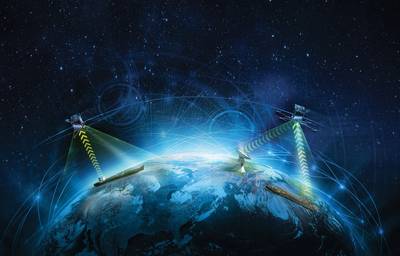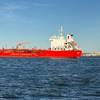Ships: Deciphering the Autonomous Vessel Debate
By Captain Andrew Kinsey, Senior Marine Risk Consultant, Allianz Global Corporate & Specialty
Confusion reigns in the ongoing debate on autonomous and remotely operated vessels. Before constructive dialogs can take place, the parameters of the discussion need to be agreed upon. Bottom line: in order to understand each other, we need to be speaking the same language.
There are two recent publications that I strongly advise all maritime professionals review, as they offer valuable guidance and insight into this rapidly developing segment of the Marine Transportation Industry.
The first is a study prepared by HSBA Hamburg School of Business Administration for the International Chamber of Shipping. The paper, which was published in October of 2018, focuses on the potential social and practical consequences of autonomous shipping and digitalization on seafarers.
The second is a DNV GL Class guideline — DNVGL-CG-0264. Edition September 2018; Autonomous and remotely operated ships, which provides guidance for:
1) Safe implementation of novel technologies in the application of autonomous and/or remotely controlled vessel functions;
2) Recommended work process to obtain approval of novel concepts challenging existing statutory regulations and/or classification rules.
The overall intention of the DNV paper is to provide a framework to ensure that the application of such novel concepts and technologies result in a safety level equivalent to-- or better than -- conventional vessel operations.
From Marine Insurance and Loss Control standpoints both of these publications provide important guidance and raise valuable points of discussion. They provide different viewpoints of how to evaluate and address these new technologies into existing operations, and more importantly how to interface with the current tasks, duties and responsibilities of current shipboard crews.
The DNV GL Guideline addresses the Build and Integrate Phase, while the ICS Study addresses the current status of Autonomous Shipping by acknowledging that all means of transportation are undergoing accelerated development toward automation and automated movements. One key issue the ICS Study addressed is the need to understand that “autonomy” is not necessarily “unmanned”; however we will see more autonomous operations aboard a ship. A key to understanding this is to review the Lloyds Register “ShipRight” Procedure guidance, particularly the six Autonomy Levels (AL 1 to AL 6). In brief, these range from AL 1 with “On-board Decision Support with all actions taken by human operator, but decision support toll can present options.” To AL 6 with “Fully autonomous with unsupervised operation.” This is just a starting point, and there are other definitions in use.
In addition, the IMO is developing its own definitions and methodology to review degrees of autonomy. Meanwhile, the DNV GL guideline provides a list of “Potential Minimum Risk Conditions” as well as a “List of Potential Autoremote Functions”. Both of these lists are important because they serve to highlight the vast array of scenarios and functions that are at play, especially for emergency operations.
While these two documents may appear to be quite dissimilar, combined they do a very good job of capturing both the near-term and long-term challenges that Marine Insurers, and our assureds, are facing. How do we implement this new technology in a way that maximizes the benefits while minimizing the risks? At the same time, how do we both effectively utilize our existing shipboard manpower and continue to attract trained and motivated crews in the future?
The ICS Study addresses a crucial point on human capital that was raised recently in the 2018 AGCS Safety and Shipping Review:
“The most frequent source of errors and cause for accidents are reported to be human failures. However, it would be trivial to assume that the human element is about failure. Countless safe voyages and avoided accidents are due to the positive contribution of humans. Humans on board enable ships to sail, they are not a problem. It must also be considered that autonomy will never completely remove “human error” as it will purely be shifting it to other areas such as the shore based controllers and the hard¬ware and software designers. Some could argue this may result in a potential increasing likelihood of human error as these people would have considerably less maritime experience making them potentially more risk prone.
Human capital is better invested to enhance productivity by interpreting data, avoiding repetitive tasks and reducing the impacts of human error on productivity.”
When shipboard systems are evaluated for potential implantation of this new technology they should be subject to a standardized evaluation, qualification and approval process. This will take both time and money. In the meantime, global commerce shows no sign of slowing down and goods will continue to move in the traditional manner. However, these traditional manners of shipping will also be undergoing change, albeit at a slower pace.
One key area where we see tremendous immediate potential is the use of a networked environment between vessels. In this environment, we can utilize the data from a Voyage Data Recorder (VDR) of a vessel that has successfully completed a Northern Sea Route transit to other vessels that are planning the same voyage. It is now commonplace for investigators to utilize VDRs in accident investigations. Isn’t it time we start utilizing data from voyages that are successful?
Moving forward, all sectors of marine transportation will face economic pressures from a myriad of factors. Be it environmental change or business pressures from the rise of non-classical shipowners, all aspects of marine operations will need to adjust to new data centric business models; this will include both shipboard and shore side operations. Given all these drivers of change, it is inevitable that the job description of the future seafarer will change, but it is unlikely that the job will cease to exist.
At Allianz Global Corporate & Specialty, our team is working with our assureds to both understand the potential long term changes and impacts that Autonomous Shipping could have on their operations as well as staying focused on the present and continually evaluating how emerging technologies can be integrated into current shipboard operations with minimal disruptions. A key to understanding the current landscape is to understand that this will not be an all or nothing approach. We will see hybrid approaches to marine operations that will both address vessel safety and fit within global regulations. From an insurance standpoint, our goal is to help ensure safe and efficient vessel operations both now and in the future.







